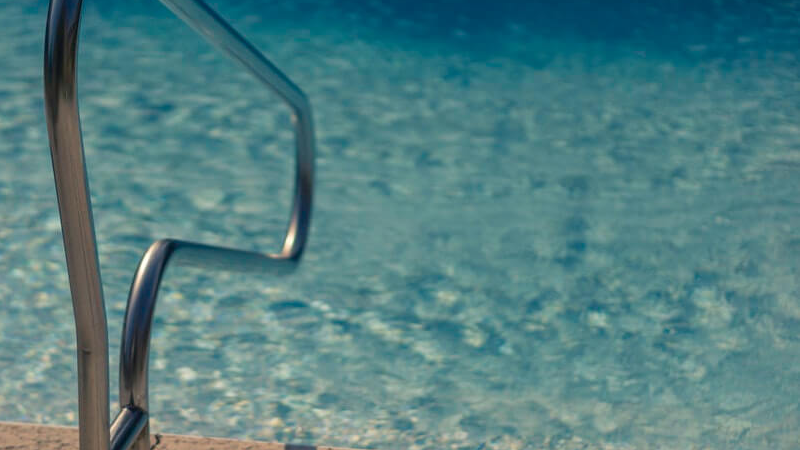- Home
- Troubleshooting
- Red Algae
Kill Red Algae: Get Rid Of Red Slime and Clear Up Your Pool
The color of Dorothy's slippers from the Wizard of Oz are iconic. Red algae in your pool is not. Don't simply ignore the cloudy water or some other stubborn dark debris by your stairs or steps. By overlooking algae for too long you’ll end up spending a lot of time and money to get rid of it.

What Is Red Algae?
It's sometimes called red slime algae and is really a bacteria. It will present itself in your pool as rust colored specks or bright reddish-pink patches on the walls, steps, and/or ladders. Even with the best pool water care, some pool owners will experience algae at some point during the swimming months. Another sign of red algae is strange discoloration of colors around stairs, in corners, on pool walls, and around jets and skimmers.
How Did My Pool Get Red Algae?
Red algae can be caused by a variety of things, but is commonly caused by lack of maintenance and not keeping the pool water properly balanced. Lack of sanitizer, high pH, and CYA that is out of range, can cause a red algae outbreak. It can also be introduced into your pool through other sources such as unwashed bathing suits or inner tubes that you may have used in the ocean or the river.
How To Get Rid Of Red Algae
If your pool has red algae, you can't play nice with it. At the first sign, you must take the appropriate steps to get rid of it. Being it's a bacteria and not an algae, it takes a little more work. It can be done. So here we go.
1. Remove Everything From Your Pool
Remove all pool toys, stairs and ladder, if you can, and give them a good scrubbing with a 1/2 and 1/2 mix of bleach and water. Don't use full strength bleach as this could damage your plastic pool toys and rubber items such as goggles. Use a soft brush and safety gear like goggles, long pants, and a shirt you wouldn't mind getting dirty.
2. Clean The Filter
We need to have a clean filter to clean dirty water. Backwash your sand or DE filter. For DE filters, make sure you have fresh DE to recharge your grids. If you have a cartridge filter, make sure you take it out and clean it well. Replace your cartridge filter if it's old or has more than 3,000 filter hours on it.
3. Test And Balance Your Pool Water Chemistry
Bring the pH, alkalinity, and hardness into line. Adjust your pH to 7.0-7.2. Chlorine is more active at a slightly lower pH level. Adjust your alkalinity to 80-120 ppm and hardness to 150-250 ppm. Remember to maintain your CYA level at 30 - 50 ppm. I use and recommend the Taylor K-2006 pool test kit.
4. Brush Your Pool
This cannot be stressed enough. Red algae has a tendency to cling to surfaces, especially slick surfaces like a fiberglass pool. The entire pool must be brushed 2 times per day with a good pool brush. If you have a plaster pool, a wire brush can be used.
5. Shock Your Pool
Increase and maintain a free chlorine level of at least 20 ppm using liquid pool chlorine or bleach. Test your pool chlorine shock every 10 - 12 hours and make the correct adjustments as needed to keep your shock level up to 20 ppm.
6. Keep Filtering
Keep that pump motor on 24/7 until the entire process is finished. All of those dead and dying red algae flakes are going to be floating in your pool water and they need a place to go. And that place it in your filter where they'll be trapped and waiting to be cleaned or backwashed out.
7. Brush The Pool Again
That's a lot of brushing!! Yes it is, and you'll want to brush your pool 3 - 4 more times before the process is finished.
8. Shock The Pool Again
Let's remember that shocking a pool is a process, not an event. Your chlorine level will always decrease, so maintaining a high chlorine level is a must in order to kill the red algae.
9. Clean The Filter Again
The first time you backwashed or cleaned the filter, it was in preparation for clearing up your pool. Now your filter has captured much of the dead and dying red algae and that yucky stuff needs to go somewhere. That somewhere is out of your filter. So backwash your sand or DE filter or clean your cartridge filter again.
10. Test And Balance Your Pool Water Again
After all that work your red algae problem should be a thing of the past. Now it's time to get back to the fun stuff, like balancing your pool water once more. Your chlorine might be a little on the high side, but no worries. It'll decrease in time. Next, your pH might be above the normal range of 7.2 - 7.8. A little muriatic or dry acid will bring it back in line.
11. Keep Your Eyes Open
Over the next few days and weeks, keep your eyes open for any sings of reoccurring red algae. It's possible that even with all that work, you may have missed a spot or two and that might be enough for red algae to be introduced once more. Make sure you do all you can do to keep it away.
How To Prevent Red Algae
Your first line of defense is to always wash your swim suits in hot water and dry them. Clean all pool toys with a 1/2 and 1/2 mixture of bleach and water. And never put anything in your pool that's recently been in the ocean, river, or stream. Have your swimming guests take a hot soapy shower before swimming can also go a long way in preventing another red algae outbreak. For more preventative measure you can:
- Maintain your alkalinity, pH, and sanitizer levels in the recommended ranges
- Run your pump and filter for 8 to 12 hours a day all season long
- Regularly vacuum and brush your pool
- Keep all pool accessories clean including pool toys, floats, and anything else that goes in your water
- Practice proper hygiene
Final Thoughts On Red Algae
Yes that was a lot of work. I know how exhausting fighting red algae can be. I've done it many time for my own customers. More importantly, you'll have a safe and clean pool to swim in.
